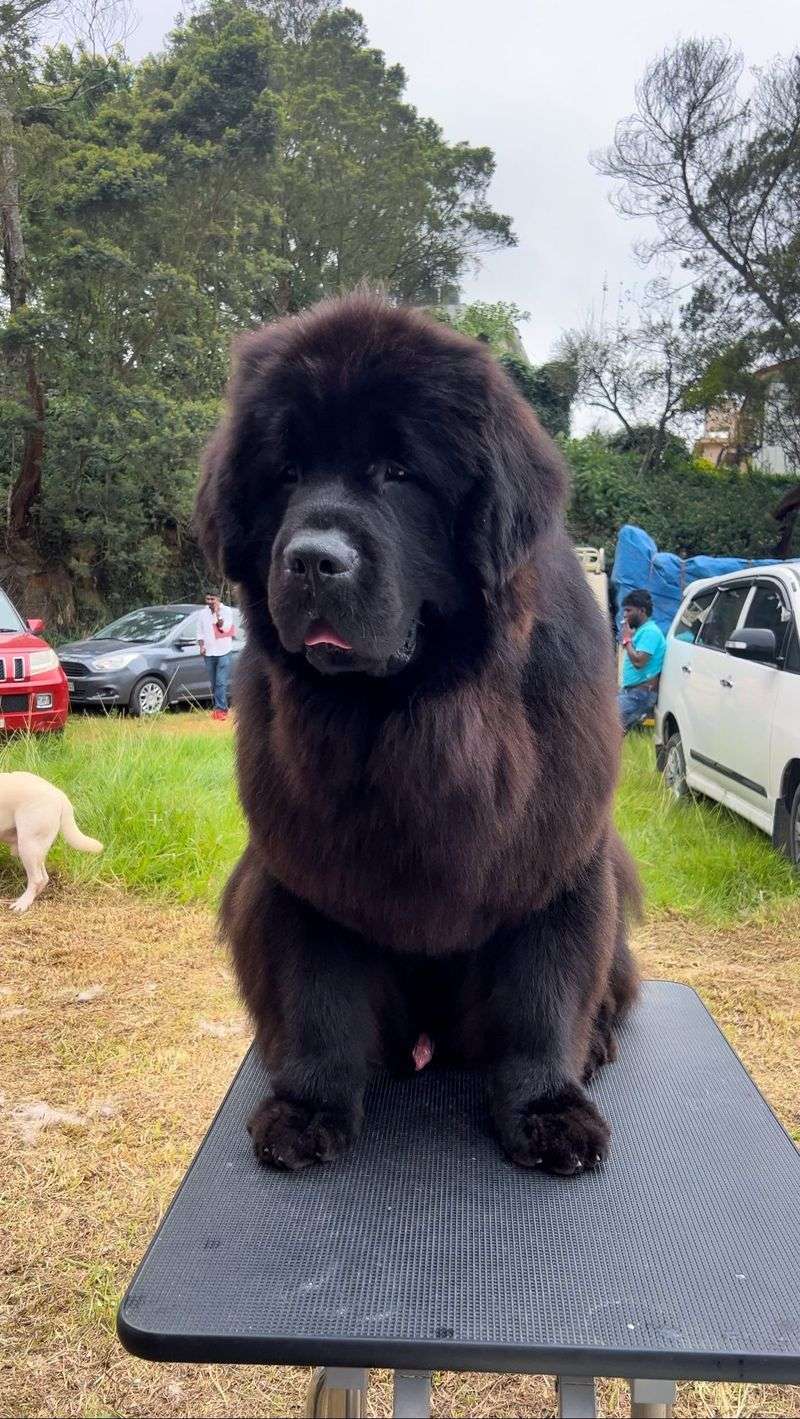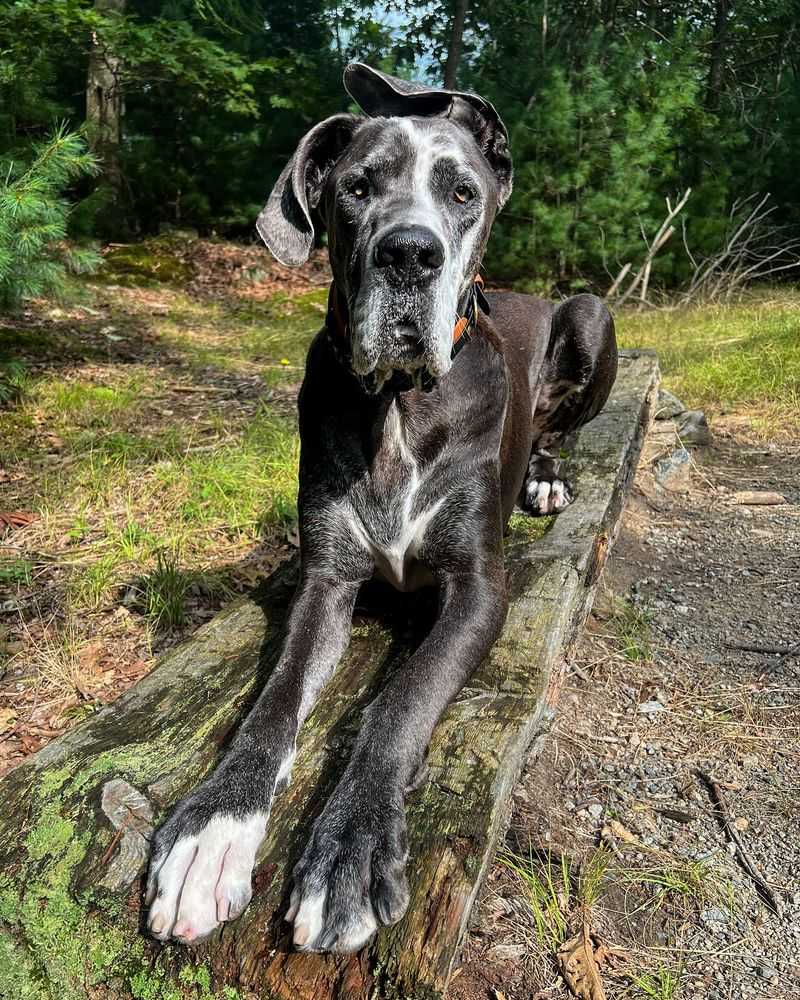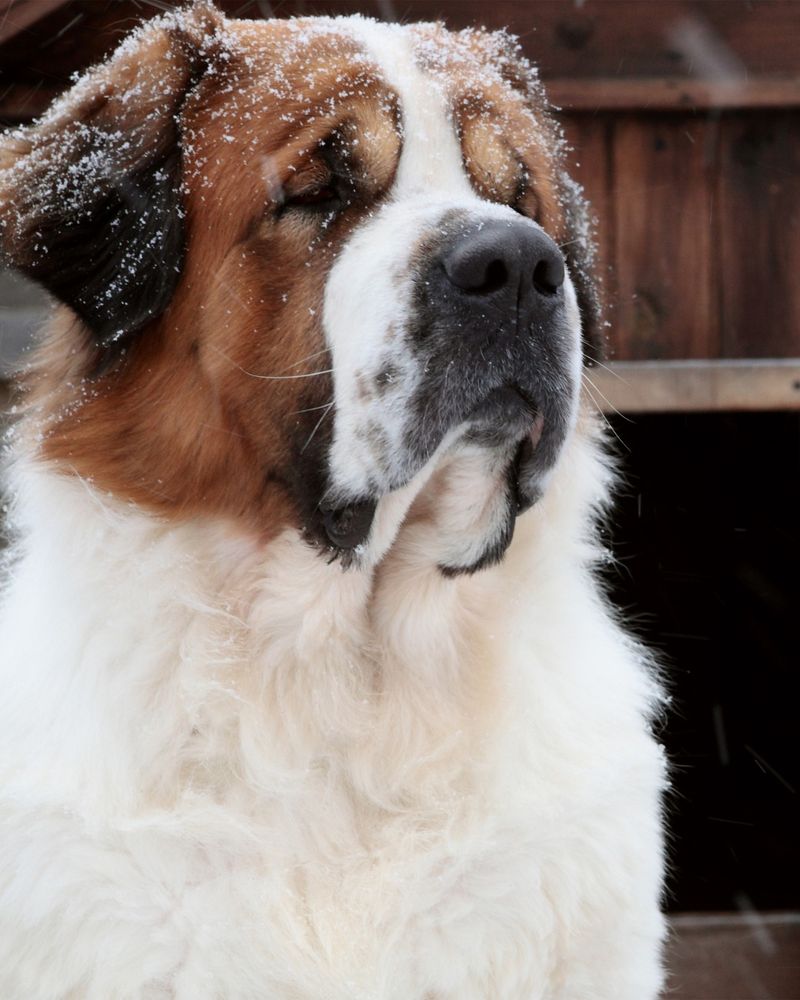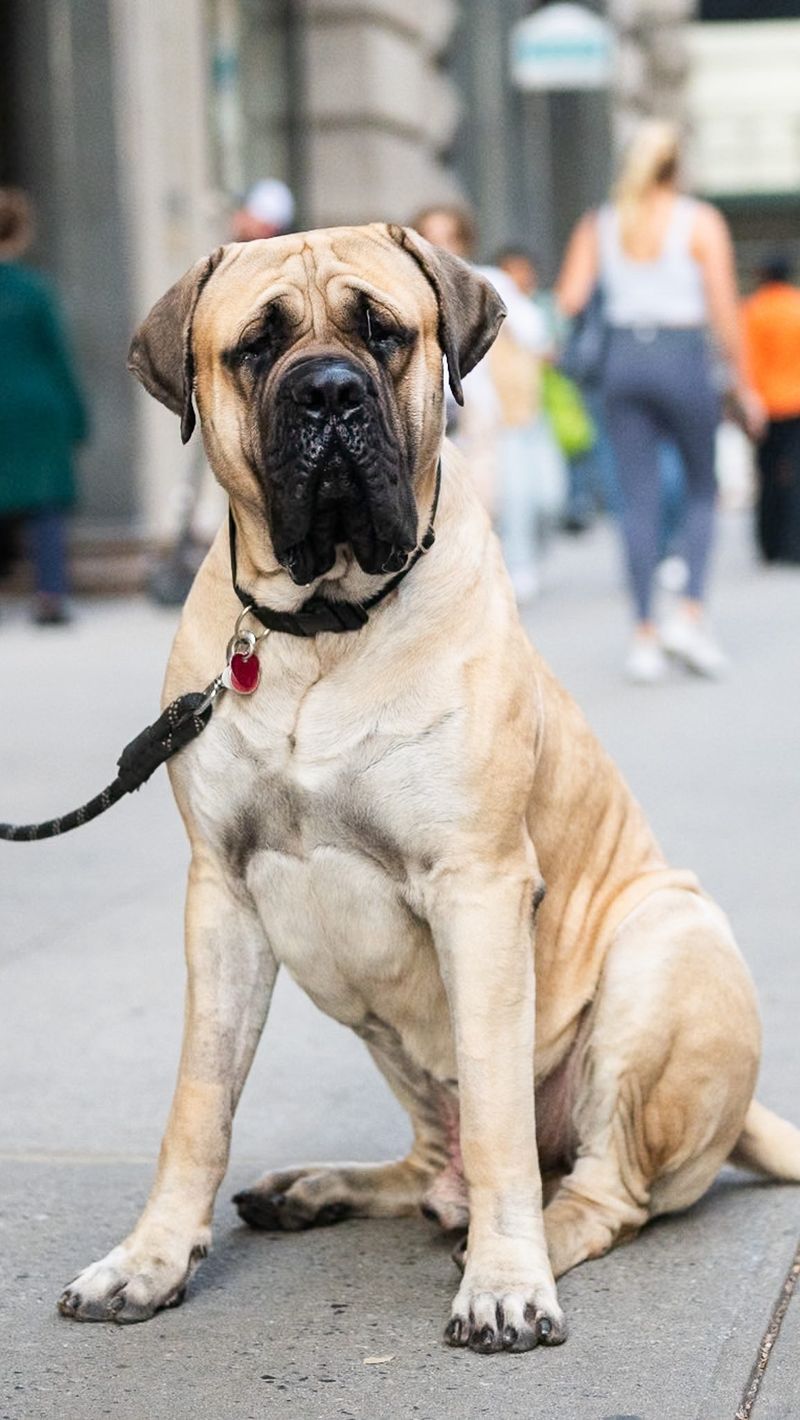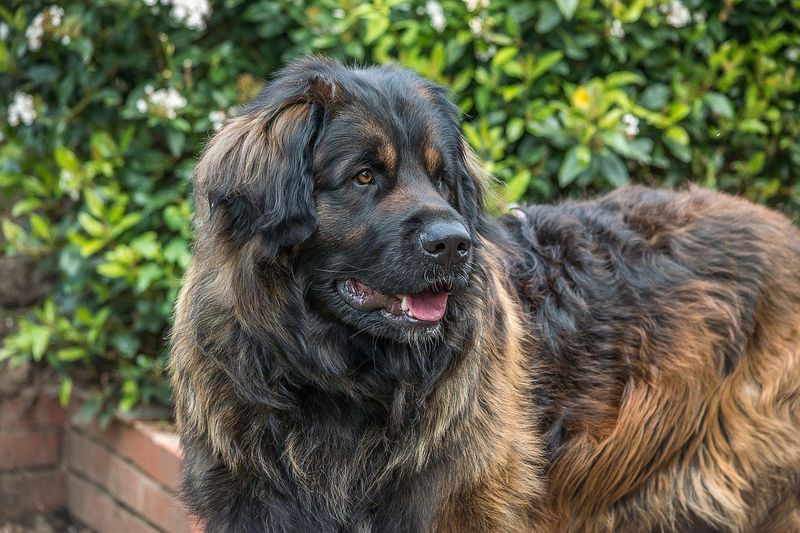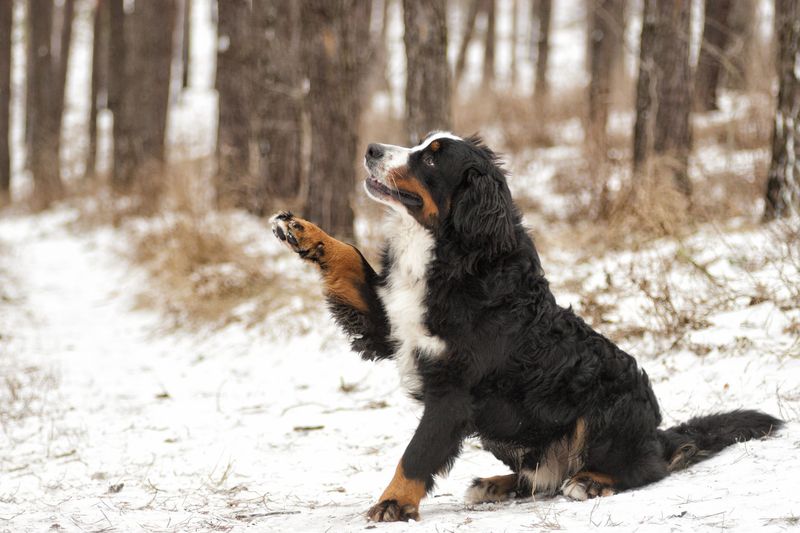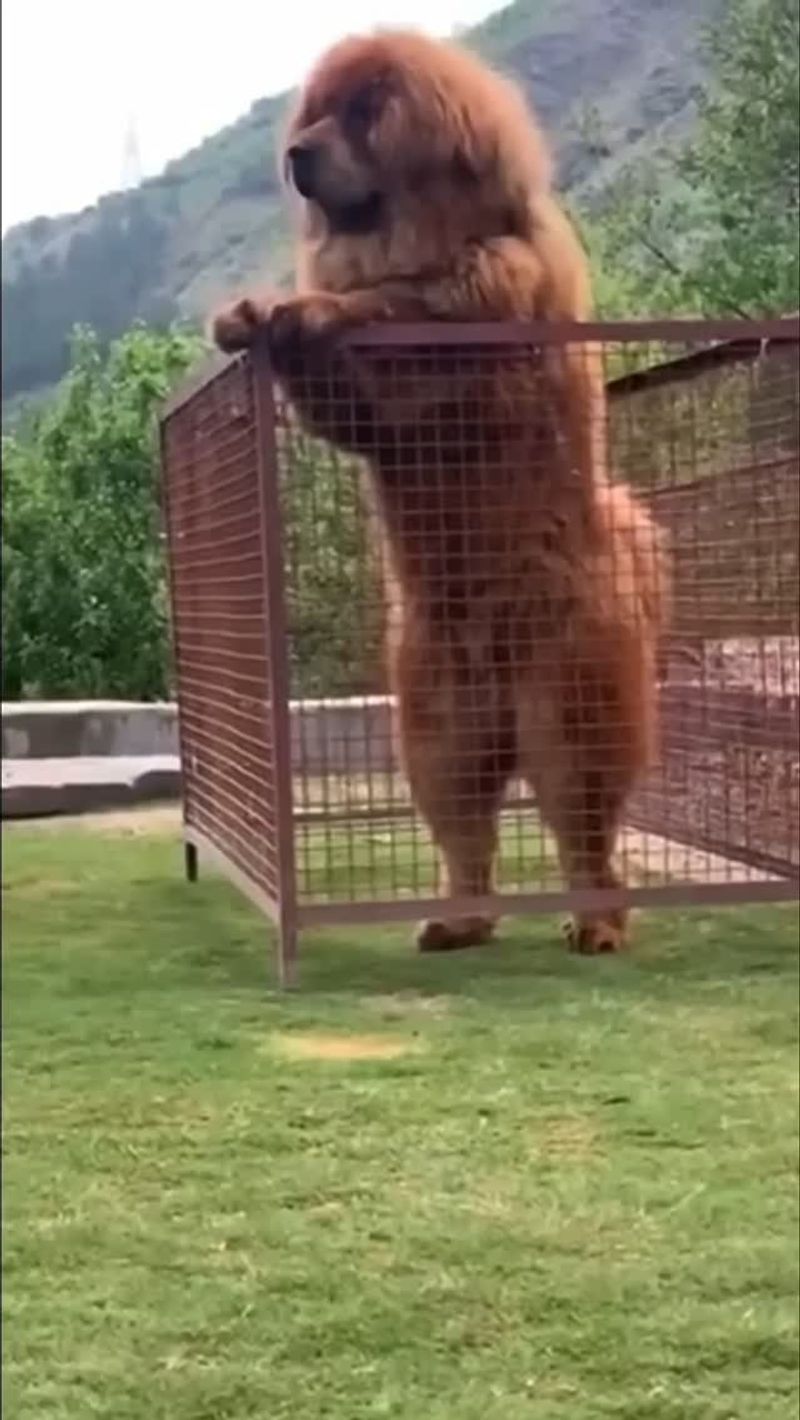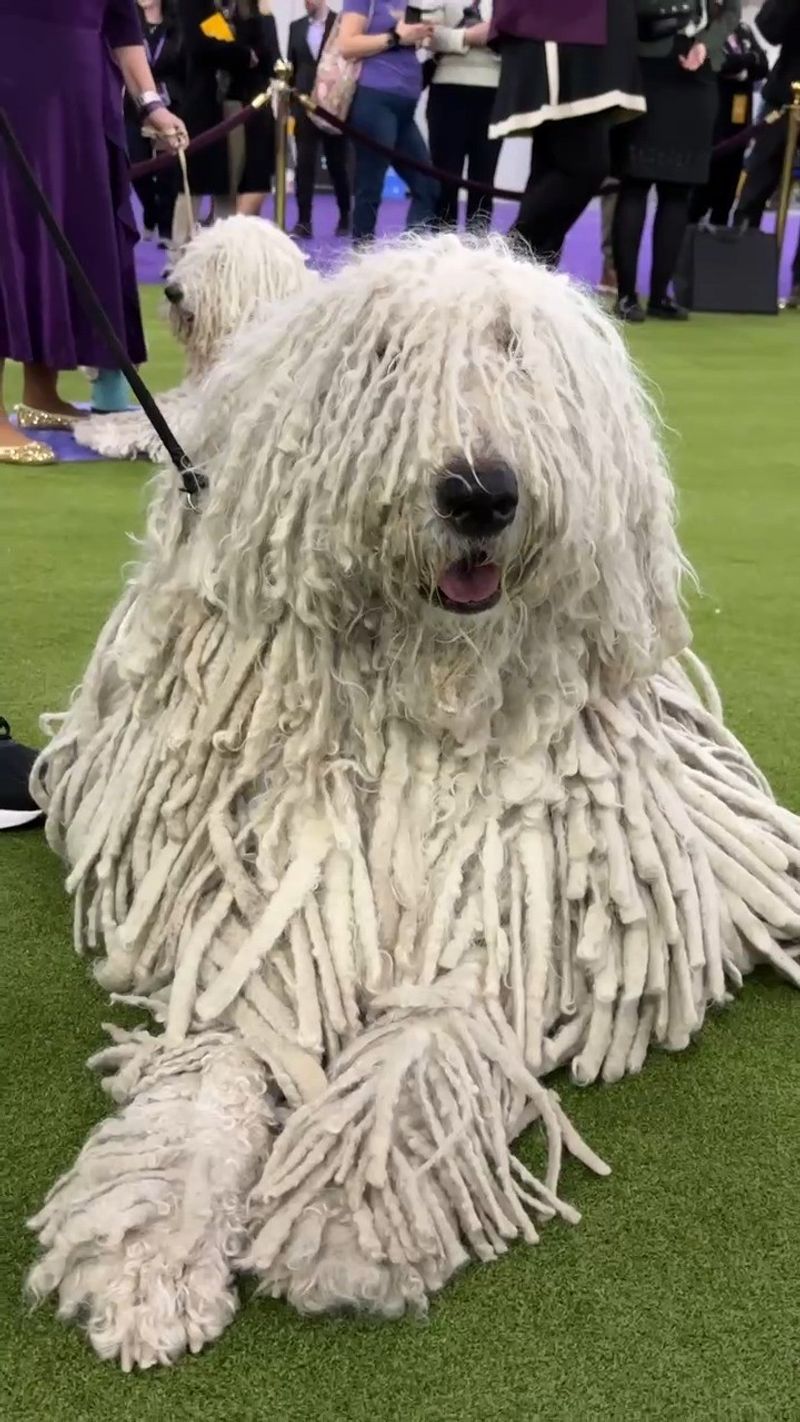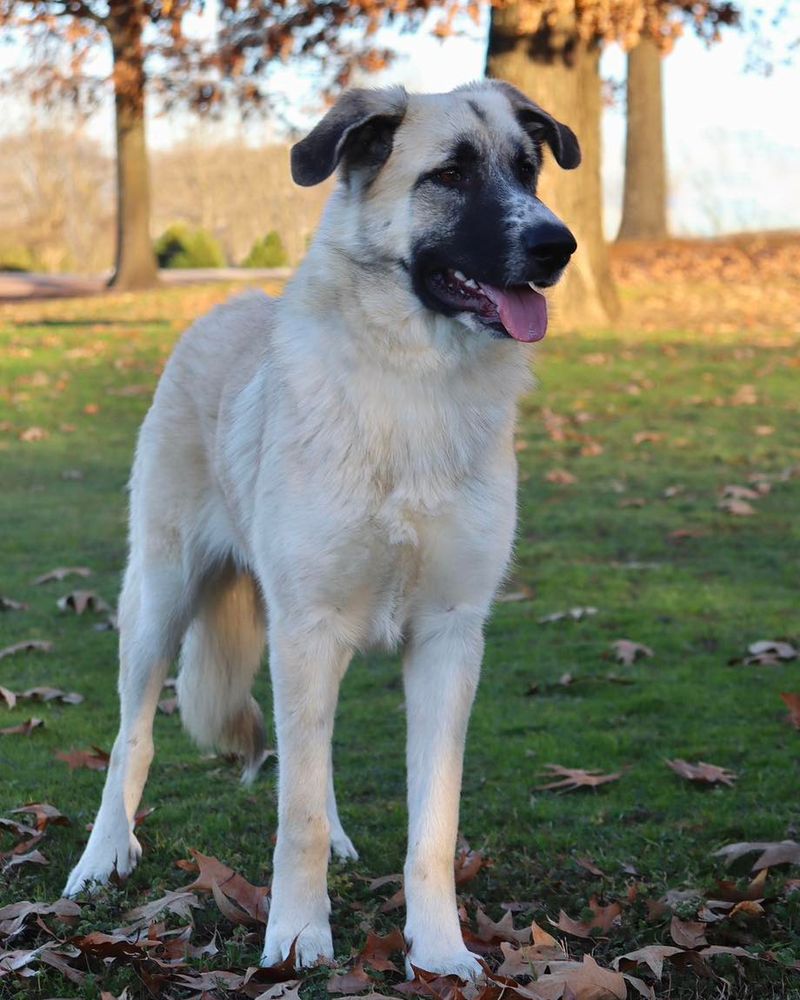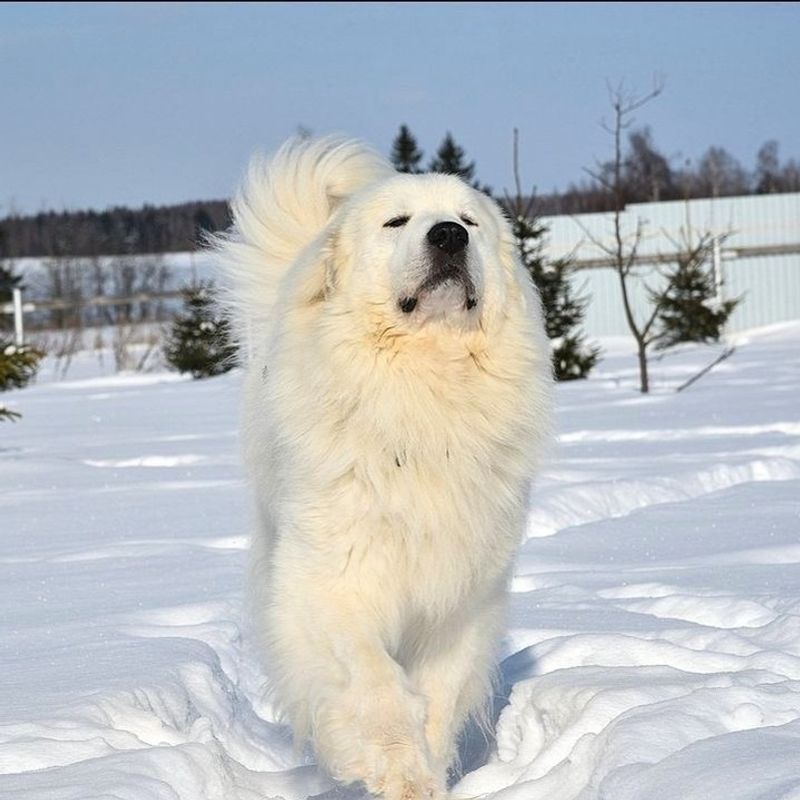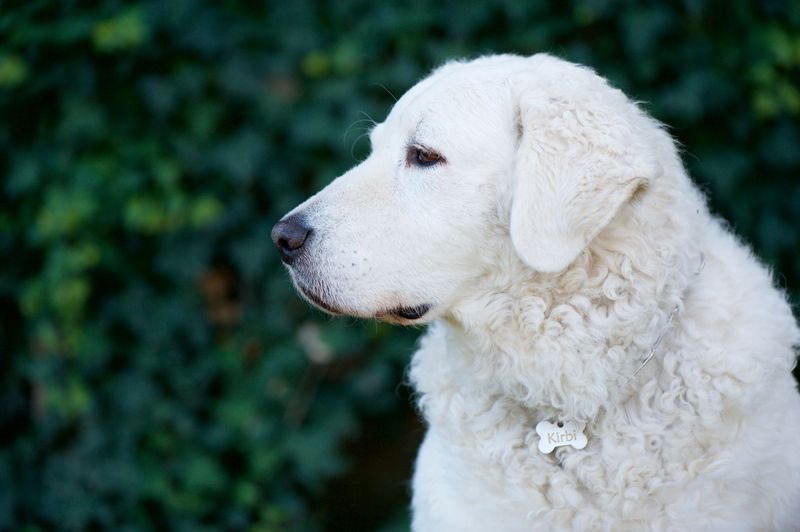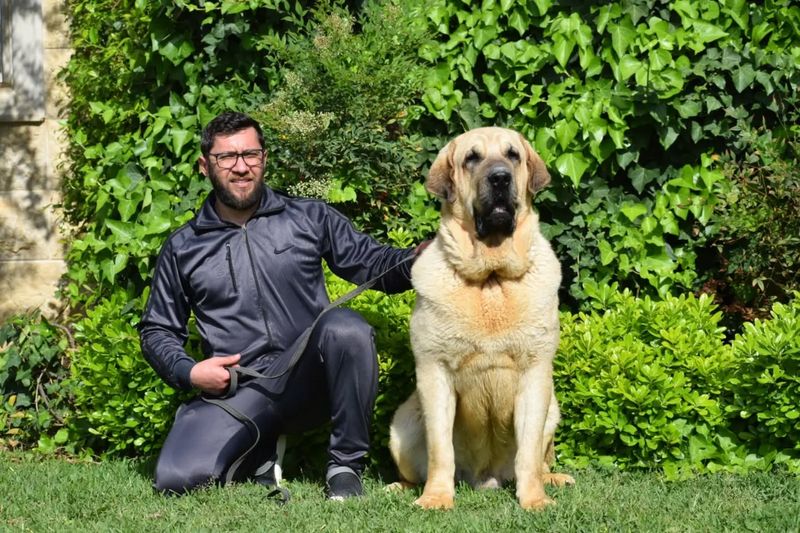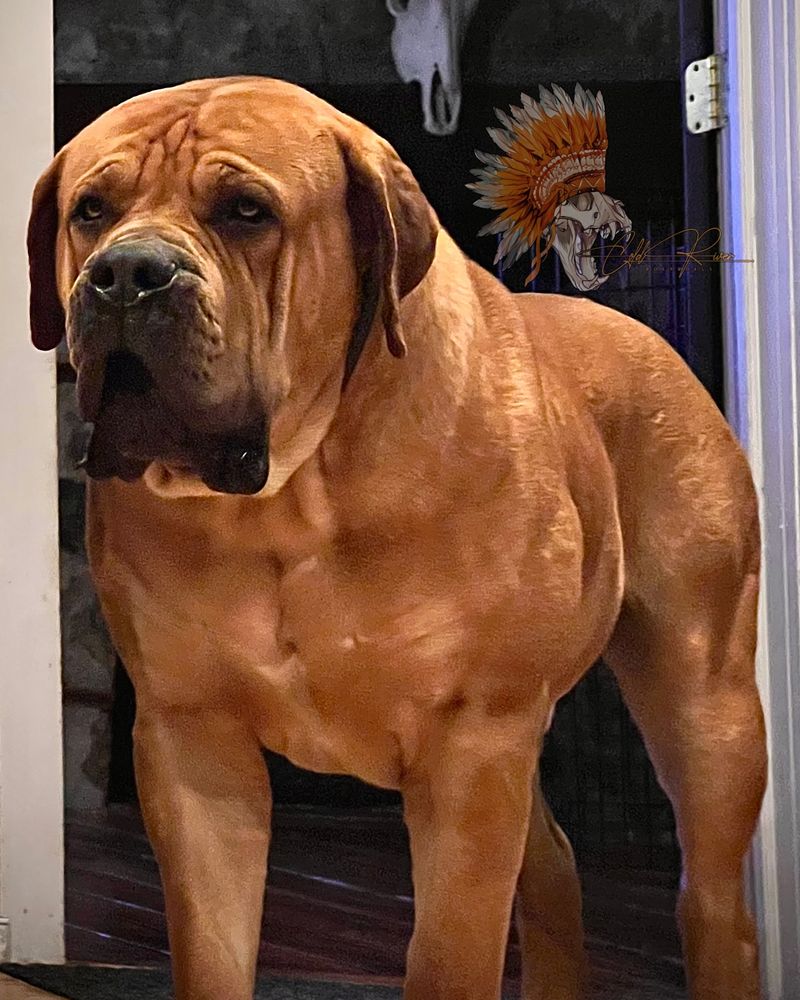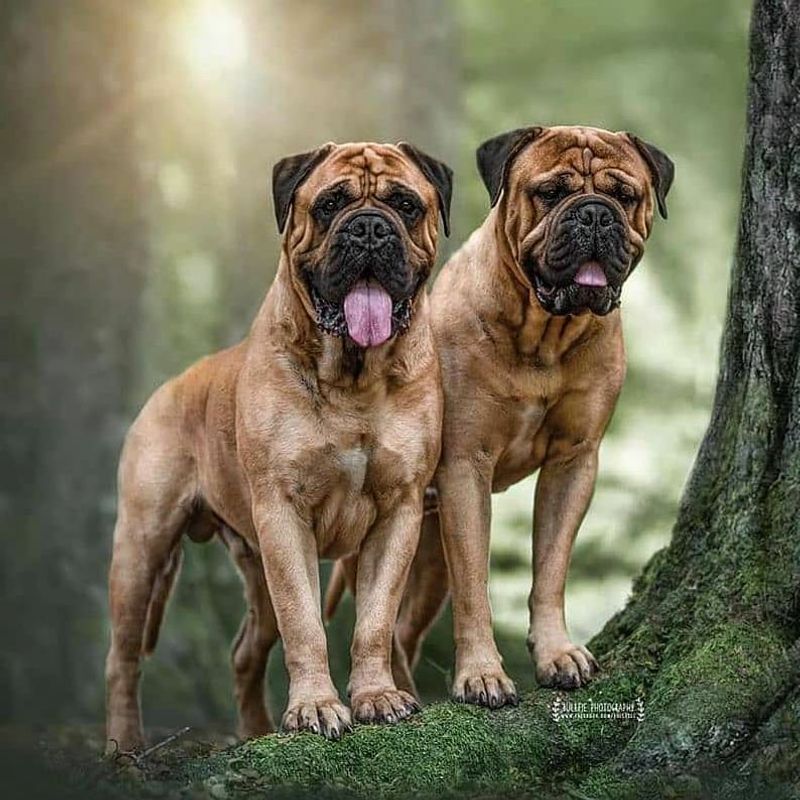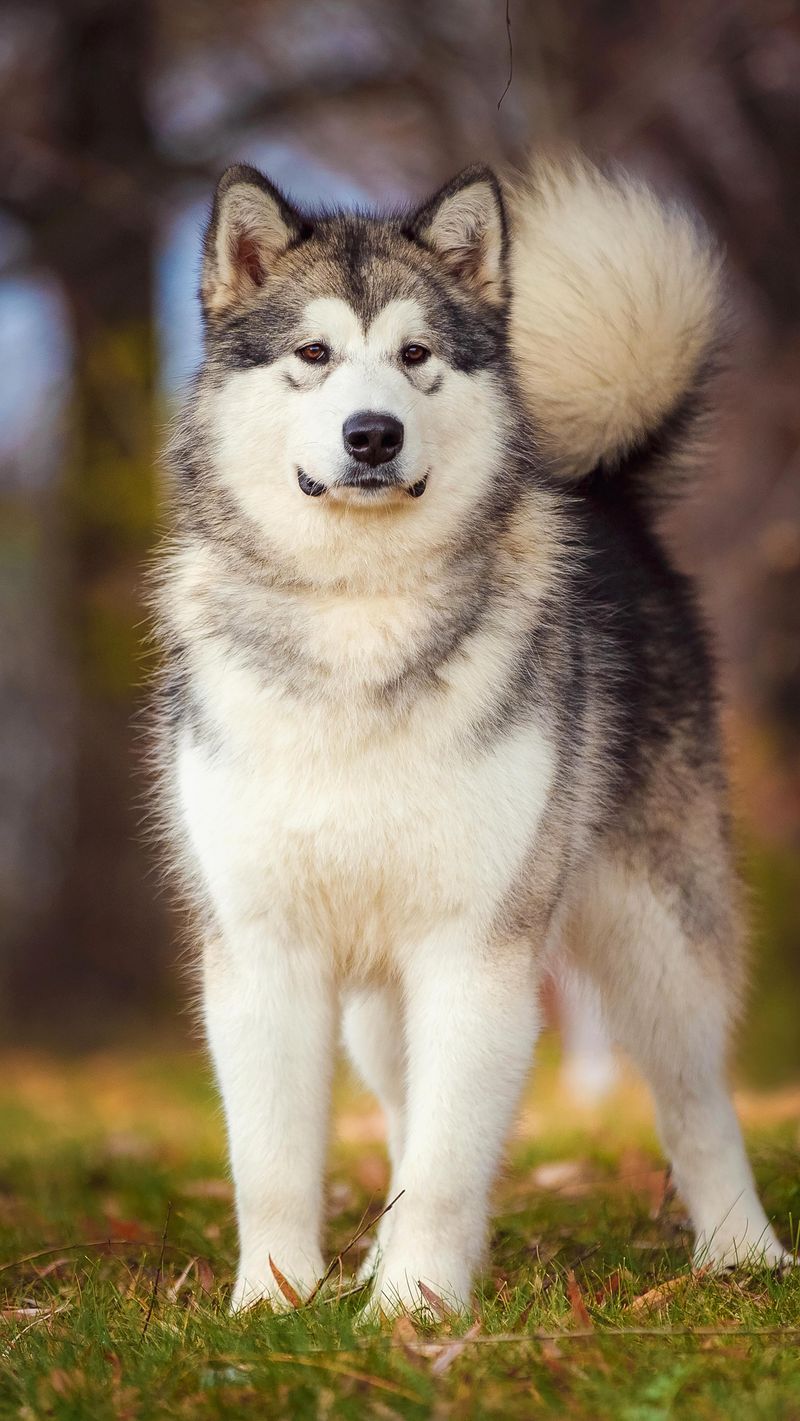Discover the world of mammoth-sized dogs, each possessing a unique charm and unmatched loyalty. These gentle giants may seem intimidating due to their size, but with the right care and guidance, they can become your most cherished companions. From their historical roots to their modern-day roles, these breeds offer fascinating insights and heartwarming anecdotes. Whether you’re seeking a protector, a loving family member, or a vigilant guardian, these dogs are sure to steal your heart. Prepare to embark on a journey through the lives of 20 of the largest dog breeds, exploring their characteristics, history, and the best ways to nurture them into gentle giants.
Newfoundland
With a heart as big as its paws, the Newfoundland is every child’s gentle guardian. Known for their swimming prowess, these dogs have been saving lives at sea for centuries.
Their thick, water-resistant coats make them perfect companions for aquatic adventures. Early socialization ensures they grow into well-mannered adults. Their calm demeanor and patient nature make them ideal pets for families.
Did you know? This breed hails from Canada and has a sweet spot for water-related tasks. A gentle touch and consistent training are key to raising this giant.
Great Dane
Towering above most, the Great Dane embodies grace and strength. Originally used for hunting wild boar, they now serve as amiable companions.
Their friendly disposition makes them great family pets, although they may not realize their size when trying to cuddle. Socialization from an early age is essential to manage their natural exuberance.
Fun fact: Despite their imposing size, Great Danes are often referred to as “gentle giants” due to their affectionate nature. Regular exercise and a stable routine help maintain their well-being.
Saint Bernard
Saint Bernards, with their soulful eyes and massive frames, are symbols of rescue and warmth. Known for their work in the Swiss Alps, they have saved countless lives.
These dogs are naturally gentle and great with children. However, their size requires a firm yet loving hand during training. Patience and positive reinforcement go a long way.
Did you know? The iconic barrel around their neck was more myth than reality, but it adds to their enduring legend. Consistent care ensures they thrive in any environment.
Mastiff
Majestic and powerful, Mastiffs are among the largest of dog breeds. Their history as guard dogs dates back to ancient times, where they protected homes and castles.
Despite their size, they are surprisingly gentle and affectionate with their families. Early socialization and training help them develop into well-behaved pets.
Fun fact: The Mastiff is known for its calm demeanor and protective instincts. A secure environment and regular interaction keep them happy and content. They require space to stretch and exercise.
Leonberger
The Leonberger, with its lion-like appearance, is a blend of strength and beauty. Originating in Germany, they were bred as working dogs.
They are known for their affectionate nature and adaptability, making them great for families. Proper training and socialization are crucial during their formative years.
Did you know? Leonbergers were once popular among European royalty. Despite their size, they are agile and enjoy outdoor activities. Regular grooming keeps their luxurious coat in top condition.
Bernese Mountain Dog
With a tri-colored coat and a robust build, the Bernese Mountain Dog is a sight to behold. Originally from Switzerland, these dogs were used for driving cattle and pulling carts.
Their gentle and friendly nature makes them excellent family pets. However, their size requires proper training and plenty of exercises to keep them healthy.
Fun fact: Despite their working dog history, they are often found lounging around the house. A loving home and regular outdoor adventures are essential for their happiness.
Irish Wolfhound
Resembling a mythical creature, the Irish Wolfhound is both elegant and formidable. Historically used for hunting wolves in Ireland, they are now cherished family members.
Their calm and gentle demeanor belies their impressive size. Early training and socialization help them adjust to family life and prevent any unruly behavior.
Did you know? Despite their hunting background, they are known for their laid-back attitude. Ample space and moderate exercise keep them fit and happy. Regular grooming maintains their coat’s natural beauty.
Tibetan Mastiff
Regal and aloof, the Tibetan Mastiff commands respect. These guardian dogs have protected Himalayan villages for centuries.
Their independent nature requires an experienced owner who can establish firm leadership. Socialization is vital to prevent aloofness and ensure a balanced temperament.
Fun fact: Their thick double coat provides protection against harsh weather. Regular walks and mental stimulation are necessary to satisfy their curious minds. Despite their independence, they bond deeply with their families.
Neapolitan Mastiff
With its wrinkled skin and formidable presence, the Neapolitan Mastiff is a true guardian. Tracing back to Roman times, they were bred for protection.
These dogs are loyal and loving toward their families but wary of strangers. Early socialization and training are essential to prevent overly protective behavior.
Did you know? Their unique appearance is both intimidating and endearing. A secure environment and consistent guidance help them thrive. Regular veterinary care is crucial for their well-being.
Komondor
The Komondor, with its striking corded coat, is a natural protector. Originally from Hungary, they were used to guard livestock.
Their unique appearance requires regular grooming to maintain the cords. Early training and socialization help them adapt to family life.
Fun fact: The Komondor’s coat provides camouflage among sheep, making them effective guardians. Ample space and mental challenges keep them engaged. Despite their independence, they are devoted to their families.
Cane Corso
Athletic and powerful, the Cane Corso is an impressive protector. Originating in Italy, they were used for guarding property and hunting.
Their loyal and intelligent nature makes them excellent companions for experienced dog owners. Proper training and consistent discipline are essential to channel their energy positively.
Did you know? The Cane Corso’s name is derived from the Latin ‘cohors,’ meaning protector. Regular exercise and mental stimulation are key to their happiness. They thrive in active households with firm leadership.
Anatolian Shepherd
Resilient and independent, the Anatolian Shepherd is a devoted guardian. Originally from Turkey, they were bred to protect livestock from predators.
Their strong-willed nature requires an experienced owner who can provide consistent training. Socialization is key to preventing territorial behavior.
Fun fact: Anatolian Shepherds have been known to chase away predators as large as bears. Ample space and regular exercise are crucial to their well-being. Their loyalty and intelligence make them cherished family members.
Great Pyrenees
With its majestic appearance, the Great Pyrenees is a true guardian of the flock. Originating in the Pyrenees mountains, they were bred to protect livestock.
Their gentle and patient nature makes them great companions, especially for families with children. Early training and socialization are vital to managing their independent streak.
Did you know? The Great Pyrenees has a distinctive double dewclaw on its hind feet. Regular grooming and ample exercise keep them happy and healthy. They thrive in homes where they have a job to do.
Kuvasz
Noble and vigilant, the Kuvasz is a traditional livestock guardian. Originally from Hungary, they have been protecting flocks for centuries.
Their independent and protective nature requires an experienced owner who can provide firm leadership. Socialization is crucial to prevent excessive wariness of strangers.
Fun fact: The Kuvasz was once reserved for Hungarian royalty. Ample space and mental stimulation are important for their well-being. Despite their independence, they form strong bonds with their families.
Spanish Mastiff
Gigantic and gentle, the Spanish Mastiff is a steadfast protector. Originating in Spain, they were used to guard livestock during transhumance.
Their calm demeanor and loyalty make them excellent companions for those who can provide strong leadership. Socialization from an early age is important to prevent territorial behavior.
Did you know? Spanish Mastiffs have been known to guard flocks against wolves. Regular exercise and a secure environment are essential for their happiness. They thrive in homes where they have space to roam.
Dogue de Bordeaux
With its wrinkled face and powerful build, the Dogue de Bordeaux is a symbol of strength and loyalty. Originating in France, they were used as guard dogs and hunters.
Their affectionate nature makes them devoted family pets, but early training and socialization are essential to manage their protective instincts.
Fun fact: The Dogue de Bordeaux is one of the oldest dog breeds in France. Consistent exercise and a loving environment are key to their happiness. They thrive with experienced owners who can provide firm guidance.
Boerboel
Powerful and loyal, the Boerboel is a formidable guardian. Originating in South Africa, they were bred to protect homesteads from wildlife threats.
Their confident nature requires an experienced owner who can provide consistent training and discipline. Early socialization is essential to prevent over-guarding tendencies.
Did you know? The Boerboel’s name means “farmer’s dog” in Afrikaans. Regular exercise and mental challenges are important for their well-being. They flourish in active households with firm leadership.
Bullmastiff
With a blend of strength and loyalty, the Bullmastiff is an exceptional guardian. Developed in England, they were used to deter poachers on estates.
Their gentle and calm nature makes them excellent family pets, but early training is crucial to manage their protective instincts.
Fun fact: Bullmastiffs were known as the “Gamekeeper’s Night Dog.” Regular exercise and a loving home environment are essential for their happiness. They thrive with owners who can provide consistent leadership.
Kangal
Respected and revered, the Kangal is a dedicated protector. Hailing from Turkey, they were bred to guard livestock against predators.
Their strong-willed nature requires an experienced owner who can provide firm leadership. Socialization is key to prevent aggressive tendencies.
Did you know? Kangals are known for their powerful bite force. Ample space and regular exercise are crucial for their well-being. They thrive in environments where they can fulfill their protective instincts.
Alaskan Malamute
Strong and spirited, the Alaskan Malamute is a true workhorse. Originally bred for sledding, they have been invaluable companions in arctic conditions.
Their playful and friendly nature makes them great family pets, but early training and socialization are important to manage their energy levels.
Fun fact: The Alaskan Malamute is one of the oldest Arctic sled dogs. Regular exercise and mental stimulation are essential for their happiness. They thrive in active households with plenty of outdoor adventures.

